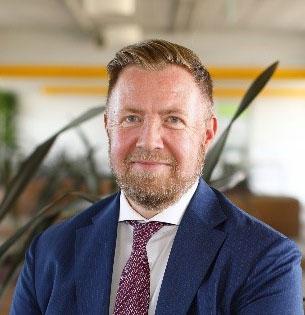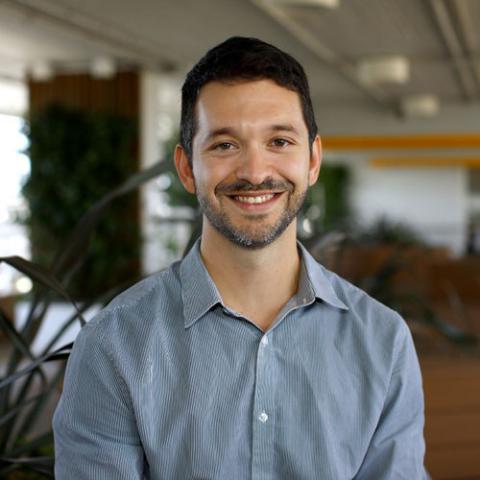IFAD innovation labs: reshaping culture through dynamic innovation
In the second quarter of 2023, the Treasury Division and the Change Delivery and Innovation (CDI) Unit of the International Fund for Agricultural Development (IFAD) joined forces to co-design and launch the first IFAD Innovation Lab, which aims to support IFAD’s efforts to foster a culture of innovation within the organization. They leverage on the knowledge and tools available in the digital platform developed by UNSSC to make the UN Innovation Toolkit user-friendly and widely available to innovation practitioners.
IFAD and UNSSC have been collaborating over the past three years in the adoption and use of the UN Innovation Toolkit to support IFAD staff and partners in their innovation journey. Together they are contributing to tangible actions to foster the systematization of innovation at the Fund. These efforts are supported by the new leadership of the organization. Indeed, at the 2023 Innovation Day on June 28, IFAD’s President, Alvaro Lario, talked about how “we at IFAD need to embrace innovation to better carry out our mandate.”
In keeping with this mindset, the team at IFAD’s Treasury is always looking for new and effective ways to improve business efficiency and results. However, it is sometimes difficult to take the first step to come up with innovations that can help tackle those tricky problems that sometimes hold back progress. Therefore, to better foster idea origination design and testing, the Treasury team got in contact with CDI and decided to co-design an “Innovation Lab” together – which turned out to be just what the Treasury team needed!
Why Innovation Labs and how do they work?
“We are all innovators, but innovation takes headspace...more than time or dedication”
In her article for UNHCR’s Innovation services, Natalia Baal (UNHCR, 2014), argued that “more than dedication and time allocation, which are easy enough to plan and find support for, innovation takes headspace”. Baal also argued that “nothing helps creating headspace better than bouncing ideas off colleagues and friends in safe environments where even seemingly silly ideas can lead to substantial solutions.”
The new IFAD Innovation Labs aim to create exactly those safe environments and opportunities for people to generate and share ideas and to be supported with proven methodologies and tools that contribute to test the feasibility, viability and desirability of their innovation initiatives. This was a unique opportunity for the Treasury team to come together and have a go with a new mindset to tackle existing challenges.
The Lab was located at the offices of the European Institute of Innovation for Sustainability (EIIS), in the inspiring settings of Palazzo Taverna, in the heart of Rome. The lab was designed with the following objectives:
- Getting acquainted with tools and methodologies we can use to originate, design and test ideas such as “Ideathons” and the Lean Canvas;
- Identifying enabling factors and barriers to innovation;
- Identifying what kind of innovators we are through the UN Innovation Toolkit diagnostic and leveraging on our strengths and the strengths of our team/s to deliver “better results quicker” by adopting a “fail fast and cheap” approach to idea testing;
- Understanding that for innovation to take place, the most important factor is for innovators to have headspace, but also a supporting environment and architecture that promote idea origination, testing and scaling up.

Using the “Innovation Planner” and “Enabling Environment Scan” tools to design the Labs
In order to address the stated objectives in a structured way, the innovation team at IFAD used the “Innovation Planner” tool to develop an innovation inventory, roadmap, and a resource plan to guide the design of the innovation labs. The primary innovation goal identified by the Treasury and innovation teams was to design an architecture and incentives that would support the origination, design and testing of ideas and that would foster a culture of innovation.
The innovation planner tool contributed to map goals to resources, identify potential barriers and list potential solutions to the challenges identified. The design work developed making use of the innovation planner was then supported by the implementation of the “Enabling Environment Scan” tool to design a survey that would help to identify staff perceptions of the barriers the Treasury team had to innovate. Based on the results from the survey, the IFAD innovation team identified culture and architecture as the most pressing challenges; namely, the Treasury team lacked time, headspace and processes to design ideas and tools to verify assumptions and base decision-making processes, when it comes to innovation, that were based on evidence that ideas were feasible, viable and that there was a real need for the product or innovation proposed. Accordingly, the innovation lab focused on design thinking with ideation tools, research-based and user-centric methodologies and on clearly defining an engaging vision through the “Headlines of the future” tool – more on this below!
Identifying innovation strengths through the “Innovation Diagnostic”
Teamwork is essential for any division to achieve excellence. In the design phase of the Innovation Labs, to help team members at the Treasury team understand their strengths and areas of development, they were asked to complete the innovation diagnostics, a 27-question assessment that assigns users one of the six innovation profiles and provides actionable insights on every user’s readiness to innovate. The information collected was then used by the innovation team to pinpoint the unique value added of each innovator profile and emphasize the importance of building teams with complementary strengths and skills. In the subsequent interactive activities such as the Treasure Hunt and Ideathon, the Treasury team was divided into five small teams based on their innovation personas to complement and build on each other’s strengths to exercise their idea origination skills. And it worked well! The teams were highly engaged in the Treasure Hunt and came up with feasible and innovative solutions to daily problems in a one-hour brainstorming session or “ideathon” making use of the Lean Canvas.
Using the “Innovation Storytelling” tool to pitch ideas!
Another important objective of the Lab was to familiarize the Treasury team with tools and methodologies to structure the “story of their idea” in an attractive and compelling way that would make it possible for them to deliver elevator-pitches to capture the attention of decision-makers. The methodology of the “Innovation Storytelling” tool was to emphasize the importance of clearly defining the audience and developing a compelling message that was tailored to them, drawing on their emotions and interests. The steps suggested in the storytelling tool to deliver better and a more effective communication of ideas, were complemented with the “C.A.R.” framework to help innovators making sure that they structrued their pitches by formulating a convincing narrative around the Challenges, Actions and Results behind their ideas and get a higher chance of buy-in from decision-makers or investors.
Inspiring and motivating through the “Headlines of the Future” tool to develop a common vision!
Using the “Headlines of the Future” tool, the management of Treasury developed three “headlines” that described how they envisioned success to look like in the future and how they intended to use the tools and exercises described above to create headspace and opportunities for team members to pitch and get support for the design and implementation of their ideas. Treasury colleagues were very much inspired by the vision presented and showed great determination in working together more innovatively to achieve the goals of the division.
The Innovation Lab was a huge success as colleagues’ passion for innovation was kindled and they expressed a 100 per cent satisfaction rate in the post-event survey. It was inspiring to see how many good and innovative ideas emerged within just a few hours of intense reflection and interaction, thanks to the guidance of the tools in the UN Innovation toolkit, the motivation from management and facilitators and positive collective attitude. All treasury colleagues took this opportunity to discuss and address real day-to-day challenges, share ideas and come up with great proposals.
The Innovation Lab is just the start of an innovation journey for both Treasury and CDI. For Treasury, this experience is not a one-time burst of innovation team-building activity but marks the start of a new approach to encourage idea generation among Treasury staff, create feedback, filter and give attention to valuable ideas and initiatives. Since the delivery of the Innovation Lab with Treasury in May 2023, the innovation team at IFAD has received multiple requests from other units and divisions to design and deliver labs with them, also thanks to the internal blog that Sebastian Brudershon, co-author of this blog, wrote to tell the story of how the innovation lab had impacted his team at Treasury.
Cheers to the continued journey of innovation among IFAD with the help of the UN Innovation Toolkit!


